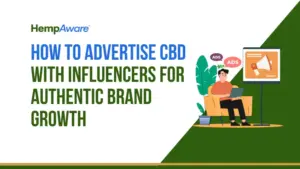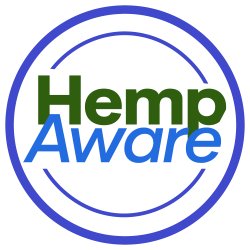Step-By-Step Guide on Whitelisting Cbd Ads on Google and Avoiding Disapprovals While Advertising Cbd on Google
Running CBD product ads online seems a bit like trying to thread a needle during an earthquake. Though every rule, policy, and mandate appears ready to throw things off, you know there is a solution. This post leads you how to run cbd ads on google without continuously running across those infamous “Ad Disapproved” warnings. Examining each step will provide a consistent road map even if Google’s regulations change like sand dunes.

Knowing Google’s Position on CBD Advertising
You know it’s a minefield if you have ever watched someone try to make sense of Google’s stance on CBD. Under its “Dangerous Products or Services” policy, Google formally limits hemp-derived products and cannabinoids—including CBD—as of early 2024. Globally, you cannot promote anything implying unapproved health advantages; actual sales of ingestible CBD are practically always forbidden.
Oddly, the matter is not black and white. Google secretly started a test permitting certified third-party advertisers in some areas of the United States to advertise particular hemp-derived CBD topical items. No, but, you cannot show up in search results for any tincture, gummy, or oil on shelves. There are still certain murky areas that evolve faster than flavors at an ice cream shop.
What is Disapproved of and Why?
Being flagged is unavoidable when you’re treading lightly on these digital shores. But what drives a takedown really? Websites offering any kind of ingestible CBD will find the most difficulty. That corresponds to gummies, capsules, sublingual oils—zip, nada, refused. Neither creative language nor burying items buried far on the web will assist either. Google’s bots search the website; generally, any “unapproved pharmaceuticals” or “misleading health benefits” cause problems.
On topicals, nevertheless, there is daylight and hope. Following strict guidelines would help qualified FDA-approved hemp-derived topical products—lotions, balms, patches—pass through in states where Google’s pilot program runs. But make even a small mistake with claims or site layout, and you find yourself back to square one.

Whitelisting: Opening Legit Path of Access
You therefore want your piece of the sponsored ad pie and are prepared to follow the official path. Whitelisting then comes in really handy. Applying for specific approval for your CBD brand or products to run through Google’s advertising system is part of this procedure. The approach only works via particular certified partners (think LegitScript or comparable compliance service providers), and only uses topical CBD for the time.
Getting Your Site and Products Ready
This is where honesty counts; even the smallest lie can bring about undoing. Review your product compositions before calling a certifier. Say goodbye to your aspirations of being whitelisted if any ingestible things exist—even hidden in a subfolder. Keep to federally permitted, hemp-derived, full-spectrum or broad-spectrum CBD with no more than 0.3% THC concentration. Every batch depends on a reliable Certificate of Analysis (COA). Do not cut here. Ideally from a QR code right on the packaging, labs should be recent, easily accessible, ISO-certified.
Go over your website top to bottom. Check that blog entries, product pages, and outside quotes avoid medical promises. Anything suggesting “cures anxiety,” “treats depression,” or “heals chronic pain” sets off Google’s algorithm. Rather, list topical advantages: calming, hydrating, relieving of minor skin irritation. This one is won by subtlety.
LegalScript: The Golden Ticket
You will then have to undergo a third-party certification, LegitScript being the best. Though Google recognizes their CBD ad compliance, their inspection is not walk-through. Compile your company records, COAs, state licenses (if any), and specifics on ingredient procurement. Prepare for payments; as of mid-2024 LegitScript’s application cost is $995/year.
With friendly emails, the process can feel like an IRS audit. Expect challenging questions on every product, manufacturing technique, and source of hemp. Should your website or products pass muster, LegitScript certifies them. You can apply to be part of Google’s CBD ad pilot using it. This does not imply you are everywhere; certain places, like California and Colorado, have a green light while others have limitations.
Getting Your Google Ad Account Ready
Link your LegitScript certification to your Google Ads account once certified. Google leads you through a quick verification cross-referencing your business information, certified items, and domain. Your adverts start if every box is checked. But one slip—a non-compliant product inadvertently mentioned—and you’re out—a too broad headline.
Work carefully on your campaign using Google Ads Editor or the dashboard. Steer clear of terminology regarding CBD; avoid “relaxation lotion” promises or “chill drops.” Try for compliant, straightforward language; educate more than you sell. Landing pages have to match ad copy; no switch-and-bait.
Geotargeting: Steering Clear of State Level Landmines
Not every state wants CBD commercials blasting their television frequencies. Google targets hyper-localized areas using their method. Run nationwide campaigns for these goods not at all. Pay only attention to the states (or, if at all feasible, even counties) allowed by the trial program. Ignoring this can cause your advertising to fade more quickly than a bunny in a lettuce patch. Keep your geo settings exactly as they are.

Observing and Preserving Compliance
Your certification is not a “set it and forget it” kind of matter. Reviewers and regulators do regular inspections; Google’s algorithms change. Run every modification—add goods, adjust formulae, or modify your website—through a compliance check. Constant openness with your certifier helps prevent surprises. Email notifications on legislative changes will help your staff stay one step ahead.
Typical Mistakes: What Sets Off Instant Negative Reaction?
Let’s face it, Google’s review bots enjoy surprises—not the type you would want. Most mistakes start here if you find constant rejections:
Including edible CBD products anywhere on your website—even if you are not advertising them.
Health claims that either directly indicate, imply, or openly proclaim unapproved applications.
COAs not updated, absent, or from less-than-reliable labs.
Ads running “nationwide,” or aimed at limited states.
Linking to outside stores offering illegal goods.
Not always clear are these trip wires. Sometimes the issue is an aggressive plugin, a buried product listing, or obsolete blog material showing up in search.




